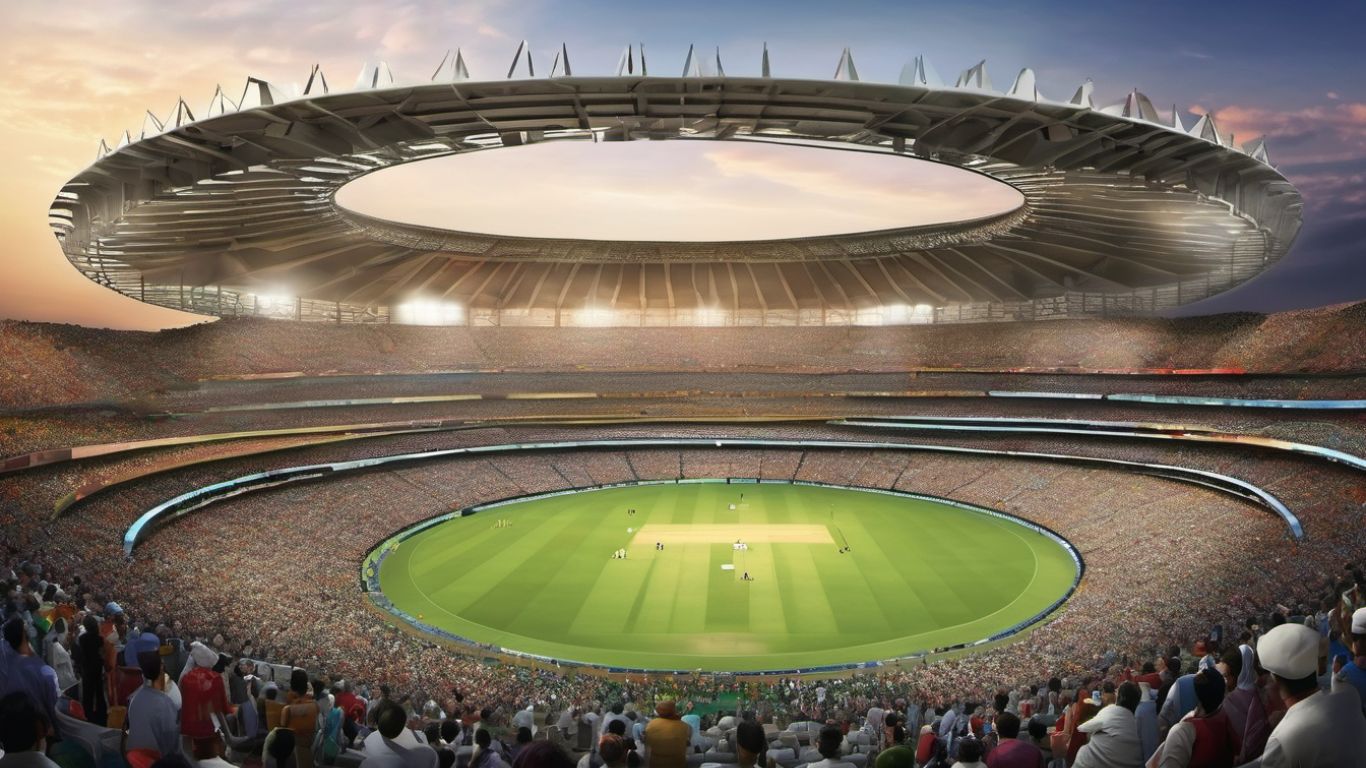In the world of dynasty fantasy football, player trade values are constantly changing. Whether it’s due to injury, performance on the field, or even excitement around a particular player, it can be challenging to gauge the true worth of a player in a trade. That’s where a dynasty trade value chart comes in. This tool is a valuable resource for fantasy football players looking to make trades and build a winning team for the long term.

sports.com
A dynasty trade value chart provides a comprehensive list of player values, typically updated regularly to reflect the latest trends in the fantasy football world. By consulting a trade value chart, fantasy football managers can get a better sense of the relative worth of players in a trade, helping them make more informed decisions when negotiating with other team owners. Whether you’re looking to acquire a star player or unload a struggling player for future draft picks, a trade value chart can be a handy tool to have in your fantasy football arsenal.
What is a dynasty trade value chart?
When it comes to playing dynasty fantasy football, having a good understanding of trade values is crucial. This is where a dynasty trade value chart comes into play. But what exactly is a dynasty trade value chart?
A dynasty trade value chart is a tool that helps fantasy football players evaluate the relative worth of players when making trades in a dynasty league. Unlike redraft leagues, where player values are mainly based on current season performance, dynasty leagues require players to consider long-term potential as well. This is because, in dynasty leagues, the same group of players is kept from year to year, with only minor changes through trades and the rookie draft.
So, how does a dynasty trade value chart work? Essentially, it assigns a numerical value to each player based on factors such as age, position, production, injury history, and potential. These values can then be used as a guideline when negotiating trades with other fantasy football managers.
For example, a young, elite quarterback like Patrick Mahomes would have a higher trade value than an aging veteran quarterback like Ben Roethlisberger, even if Roethlisberger is currently having a better season. This is because Mahomes is expected to have more years of elite production ahead of him, while Roethlisberger’s career may be winding down.
Furthermore, a player’s position also plays a role in determining their trade value. Running backs, for example, typically have higher trade values than wide receivers or tight ends due to their shorter average NFL careers and higher injury risk. This means that trading a top-tier running back for a wide receiver of similar production may not be a fair trade based on their respective trade values.
In addition to individual player values, dynasty trade value charts also consider draft picks when evaluating trades. High draft picks, especially in rookie drafts, hold significant value as they provide managers with the opportunity to select top young talent. This means that trading a proven player for a high draft pick can be a risky move, as the rookie may not pan out as expected.
Overall, a dynasty trade value chart is a valuable tool for fantasy football managers looking to make informed trades in their dynasty leagues. By using player values as a guideline, managers can ensure that they are making fair and balanced trades that benefit their team in the long run.
How to use a dynasty trade value chart in fantasy football
When it comes to navigating the world of fantasy football, one of the most valuable tools at your disposal is a dynasty trade value chart. This type of chart provides a framework for assessing the relative value of players in dynasty leagues, helping you make informed decisions when it comes to player trades.
So, how exactly do you use a dynasty trade value chart in fantasy football? The first step is to familiarize yourself with the concept of player value in dynasty leagues. Unlike traditional redraft leagues, where player value is primarily determined by the upcoming season, dynasty leagues require you to take a longer-term view of a player’s potential value to your team. This means considering factors such as age, performance history, and long-term outlook when evaluating players for trade.
Once you have a solid understanding of player value in dynasty leagues, the next step is to consult a dynasty trade value chart. These charts typically assign a numerical value to players based on their perceived worth in dynasty leagues. The values assigned to players are often based on a combination of factors such as age, performance, and long-term potential.
When using a dynasty trade value chart, it’s important to remember that player values are not set in stone. They are meant to serve as a guideline to help you assess the relative value of players in trade negotiations. While the values on the chart can be a helpful starting point, it’s also essential to consider the specific needs of your team when making trades. For example, if you are in win-now mode and looking to shore up your roster for a title run, you may be willing to trade away a younger player with high long-term potential in exchange for a proven veteran who can help you win now.
Another critical factor to keep in mind when using a dynasty trade value chart is the concept of value over replacement. In dynasty leagues, it’s not just about the individual value of a player but also how that value compares to other players in the same position. For example, a top-tier quarterback may have a higher numerical value on the trade chart than a top-tier running back. Still, if quarterbacks are more plentiful and more accessible to replace than running backs in your league, the running back may actually be more valuable to your team in the long run.
In addition to player values, dynasty trade value charts may also provide insights into trade strategies and approaches. For example, some charts may include recommended trade packages or scenarios to help you maximize the return on your trades. These suggestions can be a valuable resource when trying to navigate the often complex world of player trades in dynasty leagues.
Factors to consider when using a dynasty trade value chart
When it comes to navigating the world of dynasty fantasy football, having a trade value chart can be an invaluable tool. This chart provides a framework for evaluating the relative worth of players in dynasty leagues, making it easier to assess potential trades and make informed decisions about your roster. However, simply relying on a trade value chart without considering the context and nuances of your specific league can lead to missed opportunities or misguided trades.
One factor to consider when using a dynasty trade value chart is the unique scoring settings and roster requirements of your league. Different leagues have different scoring systems, such as point-per-reception (PPR) or superflex leagues, which can significantly impact the value of players. Additionally, some leagues have deep rosters or require starting multiple players at a particular position, which can also shift the value of players. It’s essential to take these factors into account when using a trade value chart to ensure that you’re accurately assessing the value of players in your specific league context.
Another critical consideration when using a dynasty trade value chart is the age and longevity of players. Younger players with high upside are often valued more highly in dynasty leagues, as they have the potential for long-term success and can provide value for multiple seasons. On the other hand, older players may have declining production or be closer to retirement, which can impact their trade value. When using a trade value chart, it’s essential to consider the age and career trajectory of players to ensure that you’re making trades that align with your long-term goals for your dynasty team.
In addition to player age, it’s also essential to consider the current performance and injury history of players when using a trade value chart. Players who are currently performing well or have a history of consistent production may have higher trade value, as they offer a reliable source of points for your roster. Conversely, players who are underperforming or have a history of injuries may have lower trade value, as they come with more risk and uncertainty. Evaluating the current performance and injury history of players can help you make more informed decisions about potential trades and avoid acquiring players who may not contribute to your team in the long run.
Finally, when using a dynasty trade value chart, it’s essential to consider the overall strategy and direction of your team. Are you in win-now mode, or are you building for the future? Understanding your team’s current position and goals can help you prioritize which players to target or trade away based on their trade value and fit with your team’s strategy. By aligning your trades with your team’s long-term goals, you can maximize the value of your roster and position yourself for success in your dynasty league.
Common mistakes to avoid when using a dynasty trade value chart
When it comes to utilizing a dynasty trade value chart for your fantasy football team, there are a few common mistakes that can be easily avoided with the proper knowledge and strategy. One of the biggest mistakes that many fantasy football players make is placing too much emphasis on the rankings provided in the trade value chart without considering the context of their own team’s needs and goals. While these charts can be a helpful tool for evaluating player value, they should not be the sole factor in making trade decisions.
Another common mistake is overvaluing or undervaluing certain players based solely on their current performance or reputation. It’s important to remember that player values can fluctuate throughout the season based on a variety of factors, such as injuries, performance trends, and team situations. For example, a player who is performing well one week may not maintain that level of success for the rest of the season, while a player who is struggling could bounce back and become a valuable asset in the future.
In addition, it’s crucial to consider the long-term implications of any trade you make in a dynasty league. While it may be tempting to focus solely on the short-term benefits of acquiring a high-performing player, it’s essential to also think about how that player will fit into your team’s overall strategy and roster construction in the future. Trading away valuable draft picks or young, high-upside players for a quick fix can often backfire in the long run and hinder your team’s ability to compete for championships in the future.
Another mistake to avoid is relying too heavily on the trade value chart as the only source of information when evaluating potential trades. While these charts can provide a general framework for assessing player value, they should not be used as the sole basis for making trade decisions. It’s essential to do your research, analyze player statistics, injury histories, and team situations, and consider the opinions of other fantasy football experts before making any significant trade decisions.
Lastly, it’s essential to approach dynasty league trading with a mindset of flexibility and adaptability. The fantasy football landscape is constantly evolving, and what may seem like a great trade opportunity one day could quickly become obsolete due to changes in player values, injuries, or other unforeseen circumstances. By staying informed, keeping an open mind, and being willing to pivot and adjust your strategy as needed, you can increase your chances of making successful trades that benefit your team in the long run.
Resources for finding dynasty trade value charts online
When it comes to navigating the complex world of dynasty fantasy football, having access to accurate trade value charts can be incredibly helpful in evaluating potential trade offers and making informed decisions for your team. These charts assign a numerical value to players based on their current performance, age, injury history, and potential future production.
But where can you find these valuable resources online? Fortunately, several websites and platforms provide dynasty trade value charts to help you gauge the worth of players in your league.
One popular destination for dynasty trade value charts is Dynasty Nerds. This website offers a detailed and up-to-date trade value chart that is constantly updated to reflect the latest player trends and performances. The Dynasty Nerds trade value chart is a comprehensive tool that categorizes players into different tiers based on their overall value in dynasty leagues. Whether you’re looking to acquire a top-tier player or trade away a lower-ranked player, this chart can help you make more informed decisions.
Another valuable resource for dynasty trade value charts is FantasyPros. This platform offers a trade value chart that is powered by their expert consensus rankings, providing you with a reliable and trustworthy source for evaluating player worth. The FantasyPros trade value chart allows you to compare players from different positions and assess their value in relation to each other, making it easier to identify potential trade opportunities.
Suppose you’re a member of a dynasty fantasy football community, such as a forum or social media group. In that case, you may also find trade value charts shared by fellow members. These community-generated charts can provide a unique perspective on player valuations and offer insights that you may not find elsewhere.
In addition to dedicated trade value charts, there are also tools and calculators available online that can help you assess the value of players in dynasty leagues. These tools allow you to input specific player names or positions and receive a numerical value that represents their worth in trade scenarios. While these calculators may not offer as detailed of analysis as trade value charts, they can still be a valuable resource for quickly assessing player values.
Ultimately, the key to successfully using dynasty trade value charts is to combine them with your research and analysis. While these charts can provide a helpful starting point for evaluating player worth, it’s essential to consider other factors, such as your team’s needs, league scoring settings, and overall roster construction, when making trade decisions.
By incorporating trade value charts into your dynasty fantasy football strategy, you can make more informed and strategic decisions that can help you build a winning team for years to come. Whether you’re a seasoned dynasty player or just starting, having access to these valuable resources can give you a competitive edge in your league.
Frequently Asked Questions
What is a dynasty trade value chart?
- Answer: A dynasty trade value chart is a tool used in fantasy sports, particularly in dynasty leagues, to assign a numerical value to players for the purpose of evaluating trades. It helps fantasy managers assess the relative value of players and draft picks in trade negotiations.
How are players’ values determined on a dynasty trade value chart?
- Answer: Players’ values on a dynasty trade value chart are typically determined based on factors such as their age, talent level, performance history, injury history, position scarcity, and long-term outlook in the league.
Where can I find a dynasty trade value chart?
- Answer: Dynasty trade value charts are often created and shared by fantasy sports analysts, websites, or forums specializing in dynasty leagues. They may also be available as part of premium fantasy sports content or tools.
Are dynasty trade value charts updated regularly?
- Answer: Yes, reputable dynasty trade value charts are typically updated regularly to reflect changes in player performance, injuries, trades, free agency signings, and other factors that may affect their fantasy value.
How should I use a dynasty trade value chart in trade negotiations?
- Answer: Dynasty trade value charts serve as a guideline to help fantasy managers assess the fairness of trade offers and negotiate trades that benefit their team’s long-term success. However, they should be used as a reference point rather than a strict rule.
Can I customize a dynasty trade value chart to suit my league’s settings?
- Answer: Yes, some dynasty trade value charts allow for customization based on your league’s scoring settings, roster sizes, and other factors that may influence player values in your specific league format.
Are draft picks included in dynasty trade value charts?
- Answer: Yes, many dynasty trade value charts include draft picks alongside players to help assess their relative value in trade negotiations. Draft pick values are typically influenced by factors such as draft position, draft class depth, and league size.
Do dynasty trade value charts account for positional scarcity?
- Answer: Yes, positional scarcity is often considered in dynasty trade value charts, with players at positions with fewer elite options typically valued higher than those at positions with more depth.
Are dynasty trade value charts subjective or objective?
- Answer: While dynasty trade value charts are based on analysis and expert opinion, they are inherently subjective to some degree. Different analysts may assign different values to players based on their evaluations and perspectives.
Should I rely solely on a dynasty trade value chart when making trades in my dynasty league?
- Answer: While dynasty trade value charts can be a helpful tool in trade negotiations, it’s essential to consider the specific context of your league, your team’s needs, and your long-term strategy when evaluating trade offers. Additionally, personal judgment and intuition should also play a role in decision-making.
Conclusion
The dynasty trade value chart is a helpful tool for fantasy football players looking to make trades and improve their teams. By using the chart to evaluate player values, you can create more informed decisions and increase your chances of success in your league. Remember to consider factors like age, performance, and potential when using the chart to ensure you are getting the best deal possible. Happy trading!








